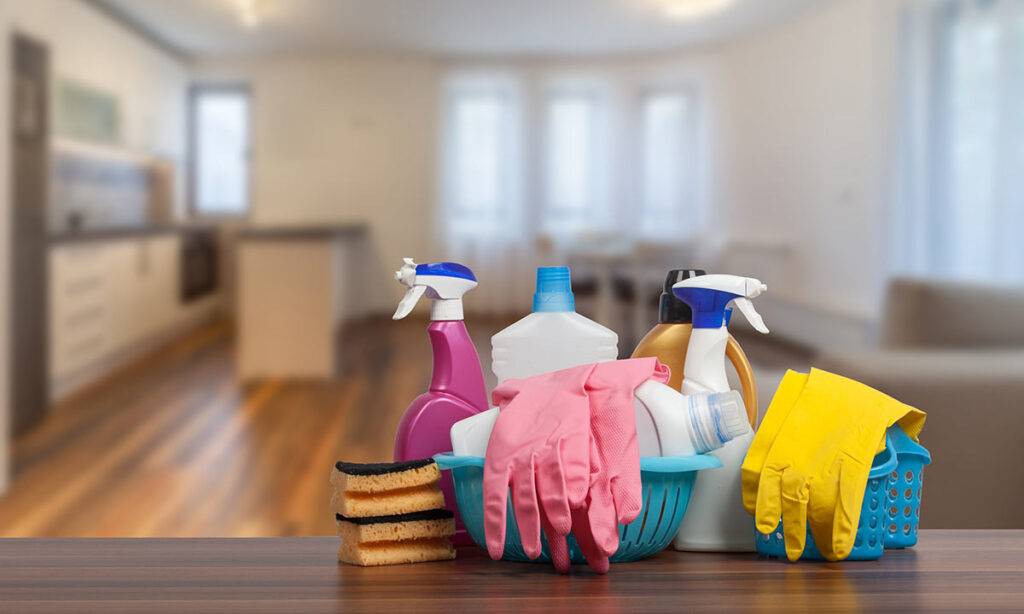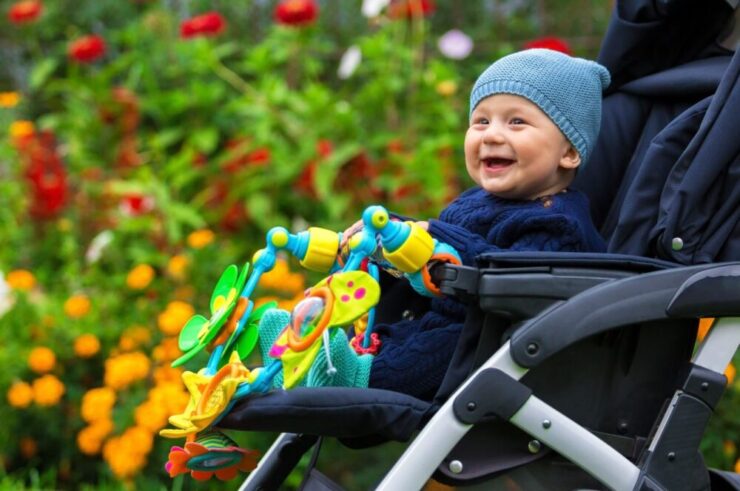I use my stroller a lot of times. So, it gets a lot of use, probably about two to three times a week.
I have a three-year-old, and she’s fairly clean, but she still gets snacks everywhere on the stroller. She also spills soft drinks and oil on the fabric.
Whenever I am in doubt, I always check out the care instructions that are all over the stroller. Care labels are attached to every part, with clear instructions on how to wash that particular part of the stroller.
Here are the steps I usually follow when cleaning my stroller:
Table of Contents
Gather All the Necessary Washing Tools

Sometimes stroller cleaning is tricky. Hence I use some specific set of tools. The tools that I normally use for washing and caring for my baby’s pushchair are:
- Warm water
- Toothbrush
- Dust brush or hand vacuum
- Wooden grilling skewers
- Two to three terry-cloth towels
- Laundry soap
- Bucket or large bowl
A Quick Spot Wash
I can do a very serious wash where I get water and a damp sponge, but I can simply grab a few baby wipes and do a quick spot wash.
A spot wash is an easy way for me to remove dirt from a particular part of the pushchair. This is actually much quicker to dry because I am not washing the entire buggy.
Medium Spot Cleaning
There’re times when spot cleaning isn’t enough. Whenever my pram needs a more serious wash, I would use a terry towel and a very mild detergent.
Then I get the terry towel wet, but I make sure I wring the cloth in order to remove any excess water. This will ensure that my buggy dries faster.
Once the cloth is ready, I give the pram a serious spot wash. With medium spot wash, I don’t just target a specific spot. Instead, I cover a wider area at one time.
Medium spot wash helps me to really get rid of dirt.
Cleaning the Seat Fabric, Cup Holders & Storage Trays
A stroller that is constantly in use can get very dirty. Generally, what I do is remove the items from inside the pram because this is actually where it gets quite dirty.
Removable parts that I normally detach are fabric seats, cup holders, and storage trays. I normally take photos of every piece/part in sequence.
I will reference these photos when reattaching all the removable parts.
The one part that may need serious cleaning apart from quick and medium spot cleaning is the seat fabric. Here are a few general steps I take when removing the seat fabric.
- I lean the pram on its back with the handlebar on the ground
- Then I unlock the fastening straps and pull the fabric through the footrest
- Hand washing the fabric with mild soap and cold water does the trick
- I normally lay the fabric flat to dry, and I never dry clean, iron, or tumble dry
Storage trays and cup holders are easy to clean. I would just vacuum all the crumbs before wiping.
Cleaning Frame
The next thing that I do after cleaning the fabric surfaces is tackling the frame. Most pushchairs I have come across are made of a metal frame.
Cleaning the frame is as easy as wiping it with a damp terrycloth and mild soap. I also use a clean terry towel to wipe off any excess soap and water.
The surface of the metallic stroller is delicate. So, I never use household cleaners, strong detergents, solvents, or abrasives on the frame.
These products can easily corrode, discolor, or scratch metallic surfaces. They can also weaken plastic parts.
Cleaning Wheels

The wheels are usually the dirtiest parts of my stroller at the end of the week since I use the stroller at least three times a week.
The very first thing that I normally do before washing the wheels is to inspect them for any defects. My pram has air-filled wheels; so, I usually pump them with air when they seem deflated.
Sometimes it’s much easier and more effective to disengage the wheels altogether from the pushchair for thorough cleaning debris or dirt.
Expert Tips for Cleaning and Caring for Baby Strollers
- I am never quick to take the seat fabric/cover off, mainly because it is a pain to take it off and put it back on correctly. I would only take it off only if I can’t tackle the messes with spot cleaning.
- I also try to avoid taking the frame apart. As a busy parent, I have more important things to do than find all the little parts that could get lost.
- A skewer is an ideal tool for cleaning dirty crevices, and a soapy toothbrush reaches into crannies and nocks.
- A damp soapy terrycloth is always the ideal choice for freshening up handles, pads, straps, and plastic parts.
- I never place heavy objects on top of the pushchair during storage, and I always store the pram away from excess heat in order to avoid damaging plastic parts.
- I periodically check the stroller to make sure that all its moving and folding parts are in good shape.
- Brakes are a very important part of my baby pram; so, I always check them before and after using the pram to make sure that they’re functioning impeccably. I would lubricate them with WD-40 if I have to. I would hate to discover a defect while my baby and I are out and about.
- If necessary, apart from the brakes I would also lubricate all other moving parts with a silicone-based lubricant. Such as the parts that move during folding and unfolding.
- I never forget to remove, clean, and properly store all stroller accessories for future use.

